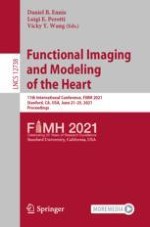This book constitutes the refereed proceedings of the 11th International Conference on Functional Imaging and Modeling of the Heart, which took place online during June 21-24, 2021, organized by the University of Stanford.
The 65 revised full papers were carefully reviewed and selected from 68 submissions. They were organized in topical sections as follows: advanced cardiac and cardiovascular image processing; cardiac microstructure: measures and models; novel approaches to measuring heart deformation; cardiac mechanics: measures and models; translational cardiac mechanics; modeling electrophysiology, ECG, and arrhythmia; cardiovascular flow: measures and models; and atrial microstructure, modeling, and thrombosis prediction.
